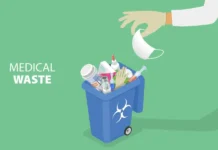Around the world, hospitals face unpredictable emergencies, either man-made or natural, that have adverse effects on their operations, infrastructure, and workforce.
For instance, a healthcare organization plays a critical role in natural disasters, accidents, terrorism, and viruses.
Recently, many hospitals and healthcare professionals have dealt with multiple disasters since the COVID-19 outbreak.
The Federal Emergency Management Agency (FEMA) has confirmed 1,451 emergencies between 2007 and 2018, demanding medical support, which was challenging for healthcare systems.
While making a proper contingency plan is challenging for medical institutions, it is a crucial aspect of remaining vigilant to handle any situation.
Read on as we discuss four ways to ensure hospitals’ preparedness for such events.
Set Up an Incident Command Group (ICG)
An incident command group is a supervisory and essential body of representatives from all departments within the hospital, which could be formed by hospital directors when necessary.
The director aims for effective development and management through ICG to regularly carry out routine monitoring and emergency drills.
According to the disaster plan, all medical and emergency institutions perform these rehearsal drills once or twice a year.
Here is an ICG structure/hierarchy as an example that may vary:
- Administration in-charge – to control the command center
- Operations chief – to organize the hospital staff and other command center instructions
- Logistics chief – to maintain equipment supply to ensure patient care
- Finance chief – to keep track of the account payable and receivable
The incident commander can establish the system, ensuring the personnel in the hierarchy are well aware, designated, and responsible for addressing issues.
In other words, an incident commander is a significant role player who has a core understanding of disaster management in healthcare facilities.
And to achieve that, enrolling for a degree similar to an online masters in healthcare management is essential, which, in this case, prepares healthcare professionals to tackle the challenges that modern healthcare industries face.
Proper Emergency-Response Procedure
In unpredictable astonishing events, timely communication is crucial both within the hospital and outside with the community and public.
An assigned spokesperson carries out the hospital’s communication with outside entities on time which aid in pre-planned decision making.
A general idea to make possible bridging these communications would be:
- To carry out major press conferences in emergency departments, waiting areas, and command centers.
- To draft important messages to prepare the staff, public, and patients in a disastrous scenario.
- To set a mechanism of information exchange between departments and outside authorities like governments and nearby health authorities inside the hospital.
- To ensure primary communications systems like landlines, mobile phones, two-way radios, and internet connections are backed up.
Proper Action During Patients Influx
During a disaster and patients’ influx, a proper action plan within the hospital is essential to ensure all the safety procedures are in place.
In this situation, the hospital’s ICG prioritize the following security needs:
- To take action for early control of the areas for patients’ inflow (traffic and parking) emergency areas for patients’ treatment.
- That ensure the quality of access points (entry and exits) for pharmaceuticals, food, and water.
- Do identify and manage the insecurity risks, be it a hospital’s confidential information, hazards, or controlling and preventing infections.
With managing overall hospital safety during emergencies, patient care is second to none; therefore, a triage officer must ensure well-functioning patient triage operations.
The triage officer has the ability to:
- Allocate well-trained emergency nurses in emergency departments
- Make the treatment zones safe from potential risks, make them easily accessible with clearly defined entry/exit points
- And overall, provide the patient treatment best practices
Depending on the disaster effect, a hospital’s patient capacity should be clearly defined and ruled out to avoid inconvenience in increased demand for inpatient care.
The hospital can accommodate increasing patients into:
- Spare areas around the hospital premises like lobby, waiting halls, auditorium
- Expand areas by outsourcing non-critical patient treatment and advising home-care for low-priority patients, and finally to ensure the emergency vehicles
- With the help of related government authorities, identify an alternate site for patient care like hotels and schools.
Smooth And Continuous Operation Management
Not only is an action plan for patient caring crucial, but considering the continuity of smooth operations during disasters also plays a significant role.
- Prioritizing the services and resources that need availability at all times, especially for most critical patients.
- Coordinating with health authorities and other hospitals makes it possible to focus on the passage of essential medical services and their backup.
With essential medical services, the hospital’s emergency also needs a sufficient staff workforce in these events to cope with unpredictable emergency patient care.
In addition, ensuring to keep track of all the supplies and shortages expectancies of pharmaceuticals and medical equipment is essential rather than finding suppliers at the last minute.
Where the hospitals and other health authorities hope for the best, they should plan for the worst to avoid facing shortages of facilities when it’s most needed.
Conclusion
In unexpected conditions, a hospital’s emergency preparedness is not something to fix once and for all.
As we all have seen recently and currently, that burden of various occurrences could catch any healthcare organization off guard.
To make sure a hospital is ready for any situation, consistent evaluations and practices of your emergency preparedness plan are far-reaching.



































































